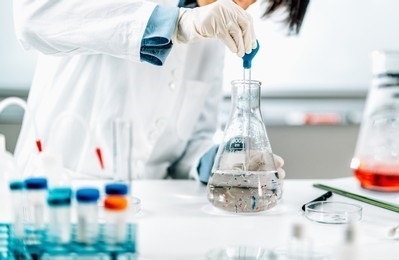Suspended matter in water refers to some very fine particles that remain suspended in water for a considerable period and do not sink to the bottom, including insoluble inorganic matter, organic matter, mud, sand, clay, microorganisms, etc. Like other water environment pollutants, suspended matter in water has adverse effects on water ecosystems. It is an important non-point source (NPS) pollutant and the most prevalent pollutant that affects the effective functioning of rivers and lakes.

Suspended matter in water causes light attenuation, shortens the depth of the light transmission zone, and alters the vertical stratification of heat in the water column. Therefore, suspended matter in water is also an important parameter in water conservation studies and water quality evaluation.
Lifeasible can effectively detect the concentration and content of suspended matter in water. The results can be used to evaluate water quality, assess the potential adverse impact factors of the water environment, and determine the total maximum daily load (TMDL) of suspended matter in impaired waters.
Lifeasible uses optical sensors to measure the intensity of the light signal scattered (backscattered, scattered) or transmitted by suspended matter irradiated by visible or near-infrared light sources to determine the concentration of suspended matter in water and accurately record rapid fluctuations in the concentration of suspended matter in water.
Lifeasible uses a laser diffraction sensor to measure the laser diffraction caused by suspended matter in water. From this, information on the particle size distribution and concentration of suspended matter and to measure the total amount of suspended matter in water at a given time.
Lifeasible can use acoustic techniques to determine the concentration of suspended matter in water, which is a non-invasive measurement and, therefore can measure suspended matter in the vertical range.
The concentration of suspended matter is linearly related to the output signal of the capacitive sensor over a wide range, so Lifeasible can determine the concentration of suspended matter by measuring the dielectric constant of the suspended matter-water mixture.
In addition, microplastics are an emerging type of suspended contaminant that is also insoluble in water, floating and suspended as particulate matter. They are prevalent in marine and inland environments, with higher residual concentrations in the environment, and are more likely to be ingested by organisms. Lifeasible has expanded its testing platform to address this emerging specialty of suspended solids, allowing customers to evaluate suspended solids in water comprehensively.
The concentration and content of suspended matter is one of the most important factors influencing the quality of the water environment and is an important indicator of environmental testing. Lifeasible strictly controls the critical points in the testing suspended matter in water, focusing on the details of the operation, thus ensuring the accuracy, precision, and comparability of suspended matter testing. Please contact our staff to customize your water suspension matter testing program to help you get the most accurate and professional testing data.
Lifeasible has established a one-stop service platform for plants. In addition to obtaining customized solutions for plant genetic engineering, customers can also conduct follow-up analysis and research on plants through our analysis platform. The analytical services we provide include but are not limited to the following:
Get Latest Lifeasible News and Updates Directly to Your Inbox
Adaptive Evolutionary Mechanism of Plants
February 28, 2025
Unraveling Cotton Development: Insights from Multi-Omics Studies
February 27, 2025